Which Benefits Provide the Best Worker Outcomes–and Return on Investment?
There’s no end to the list of benefits employers can offer now, from pet bereavement leave to baby bonuses and ketamine therapy. But the books have to be balanced at the end of the year, and company leadership isn't inclined to cut a check for anything that doesn’t demonstrate a return on investment. Caught between job seekers who expect competitive packages and the budget-conscious C-suite, benefits professionals have to make tough choices.During From Day One’s April virtual conference on finding benefits that support individual needs without busting the budget, five benefits leaders with decades of experience gathered to discuss which benefits provide the best worker outcomes–and return on investment.Vetting New Benefits OfferingsKimberly Young is the VP of global benefits at HR tech at Amentum, a government contractor for defense, security, intelligence, energy, and environment projects. The first question she asks to vet a new benefits platform is how it will integrate into the company’s existing tech stack; otherwise, the lift to simply implement it may be too great.“The biggest challenge is how to onboard new technology and integrate it with those existing portals related to payroll, your HR data system, and other feeds,” said Young. “Additionally, we look for ease of administration and implementation. The time and resources it takes to invest and implement new technology is high on the list.”Employers have to know that adding a new benefit or platform will be worth the time, says Devin Miller, co-founder and CEO of emergency savings platform SecureSave. The communications component alone can require a lot of time and resources, so “it has to resonate, it has to be easy to administer, and employees have to like it,” he said. “It has to be cost-effective, and then it has to be provable so that you can stand up in front of a management and say ‘this is the impact we’re having.’”Communicating With a Multigenerational Workforce“As benefits professionals, [communication] is an age-old struggle,” said Elizabeth Chappelear, North American head of strategic benefits at life sciences and biotech firm MilliporeSigma. “Employees don’t care about their benefits until they need them, so we have to make sure that when they do need it, they can find it.”Panelists agreed that the familiar challenge of communicating benefits isn’t made easier by the current makeup of the labor force. “This is the first time we’ve had five generations in our workforce, and that means different preferences,” Chappelear commented. Her team is creating home mailers at the same time they’re posting QR codes in the breakroom, hosting webinars and virtual benefit fairs, and building microsites. “We’re constantly challenging ourselves to evolve that communication to meet our employees where they are.”When Carrie Theisen revamped Fannie Mae’s benefits for the first time in more than a decade, communication was one of the first things she tackled. “I start with communication, because it’s just so critical,” said Theisen, who is the lending company’s SVP of total rewards.Theisen began by surveying all employees. She learned that more than three-quarters of employees were happy with the benefits package, but they also found that workers were requesting benefits that Fannie Mae already offered. “That told me that we had a good, solid package, but we just weren’t communicating it well.”Given the size of benefits packages now, total rewards leaders have to be marketers as well. Theisen’s strategy was to create a value proposition and a brand for their benefits, centered around a five-pillar graphic. “Then we looked to add a lot of low-cost benefits that we could implement quickly, then packaged those two things together. The new branding with the new benefits helped build excitement with employees, and it’s become a key differentiator for us.” In fact, their benefits satisfaction score went from 79% to 91% in a single year.Emily McCrary-Ruiz-Esparza moderated the conversation among benefits experts from SecureSave, MilliporeSigma, Spring Health, Fannie Mae, and Amentum (photo by From Day One)For those who need to increase uptake, an immediately applicable benefit can be an easy avenue into broader benefits engagement, said Miller. That starts to tip the scales of the equitable exchange of the benefits–you just got to get them engaged in the process, and finding a broadly based appealing program is an important first step.”Expanding Benefits to Reach an Entire WorkforceBenefits that would have been rare differentiators a decade ago–like mental healthcare access and fertility treatments–are now common features of benefits packages. What’s the next evolution?The next wave is specialized programs for high-touch conditions, says Casey Smolka, head of actuarial analytics at mental health benefits platform Spring Health. By expanding healthcare into specialized programs, employers are able to support workers with often overlooked needs. And it can still be a cost-effective addition, he said. “Everybody has a really solid therapy program, but what are you doing for substance use disorder? It’s a really costly condition, and you may have only a couple of people who need the support, but if you don’t give them the support they need, the cost to your company and to the employee is astronomical.”Some benefits are retention-boosters. Smolka looked at Spring Health’s own workforce and found that those who engage with the company’s mental health benefits have a 22% higher stay rate than those who don’t.SecureSave’s Miller noted that access to benefits isn’t always equally distributed, with white collar workers often “soaking up” the bulk of the benefits budget. Perks aimed at hourly and low-wage workers–emergency savings programs, for example–can be a way to support workers at all levels, from the office to the shop floor.Some panelists acknowledged how challenging it can be to find the right constellation of benefits for some demographics–Young, for instance, is still looking for the right partner to serve Amentum’s LGBTQ+ community. Others talked about having to forgo some popular benefits–like student loan repayment and lifestyle spending accounts–because they’re just too costly.Yet all agreed that the most impactful provisions don’t necessarily have to be budgeted for. Fannie Mae doubled its parental leave from six to 12 weeks, added caregiver leave, catastrophe leave, bereavement leave, grandparent leave, plus added more vacation time and extended flexible schedules.“People want to make more money, they want time off, they want retirement, they want good health care. Those are the table-stakes components,” said Miller. “You want to strengthen those programs, and make sure that people use them and value them, but you really need something that is going to be impactful for your organization.”Emily McCrary-Ruiz-Esparza is an independent journalist and From Day One contributing editor who writes about work, the job market, and women’s experiences in the workplace. Her work has appeared in the BBC, the Economist, the Washington Post, Quartz, Fast Company, and Digiday’s Worklife.





